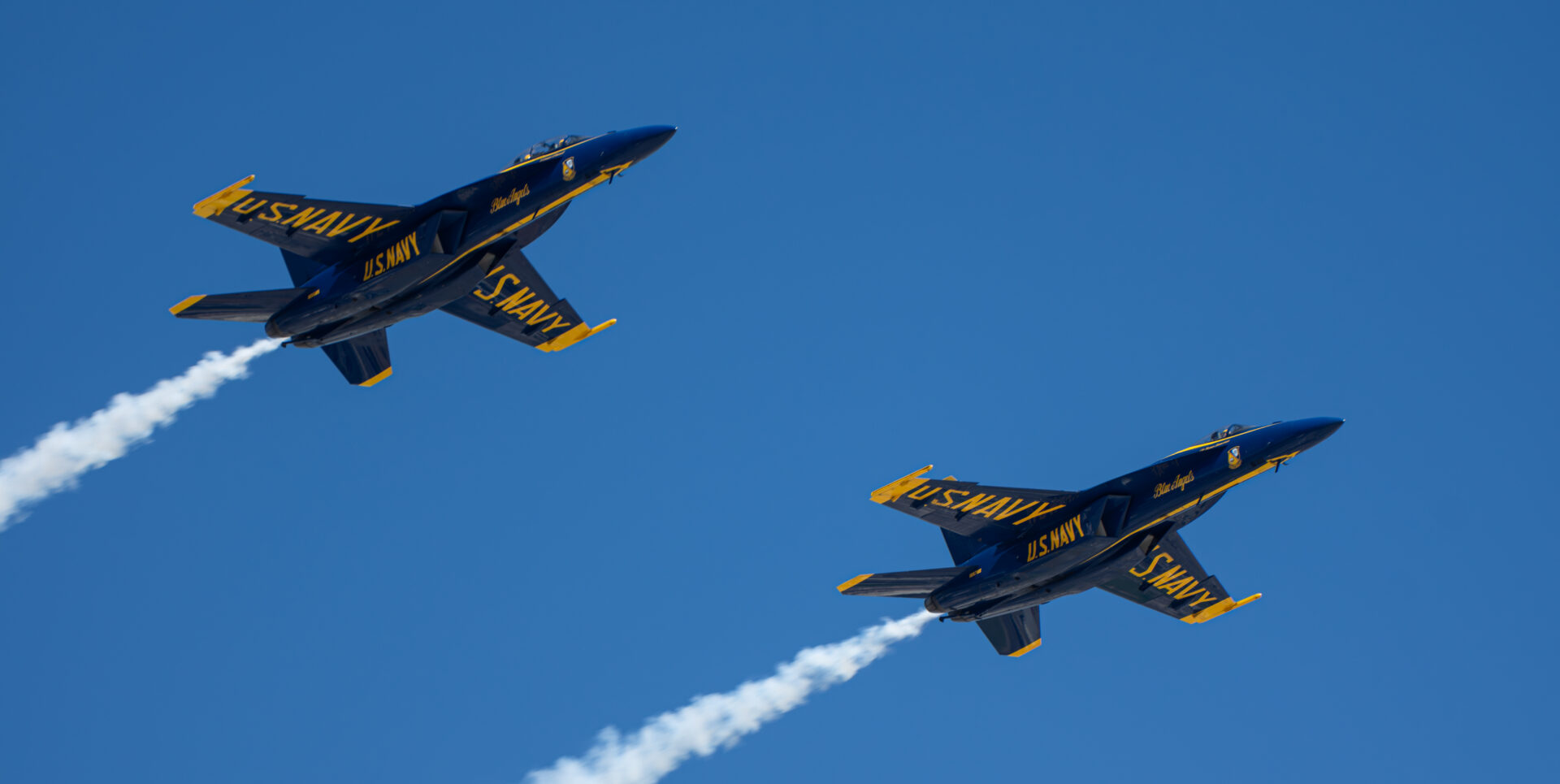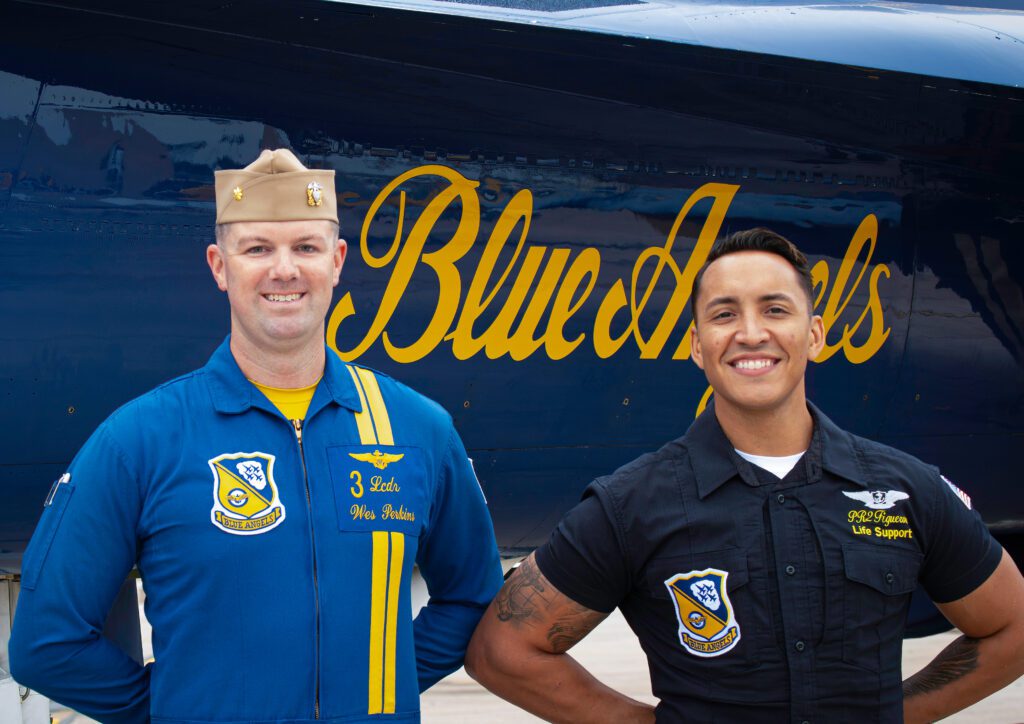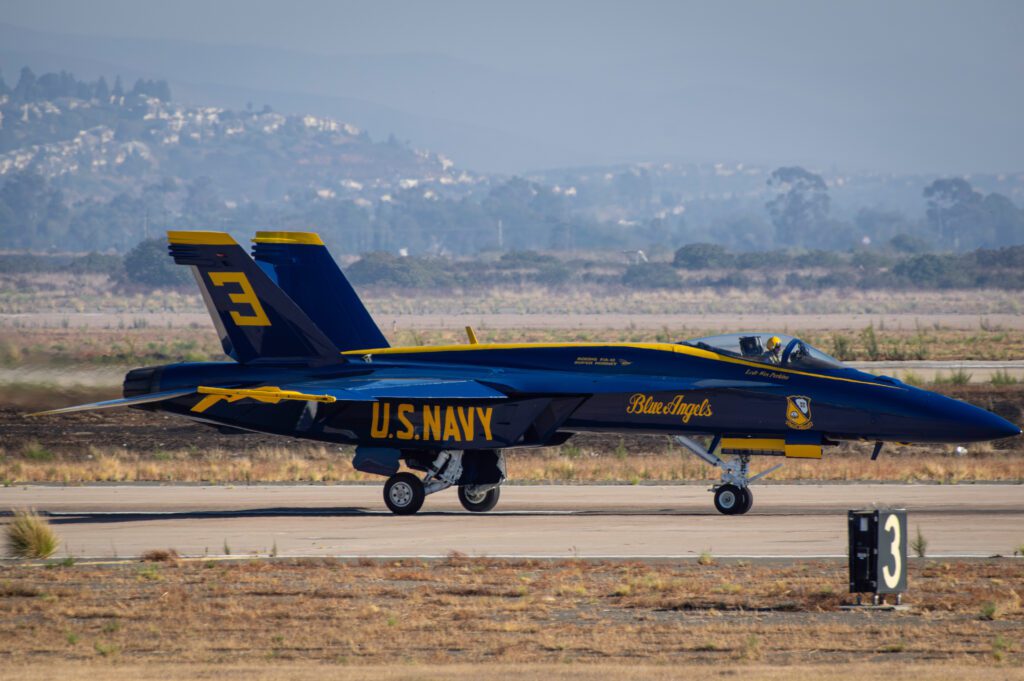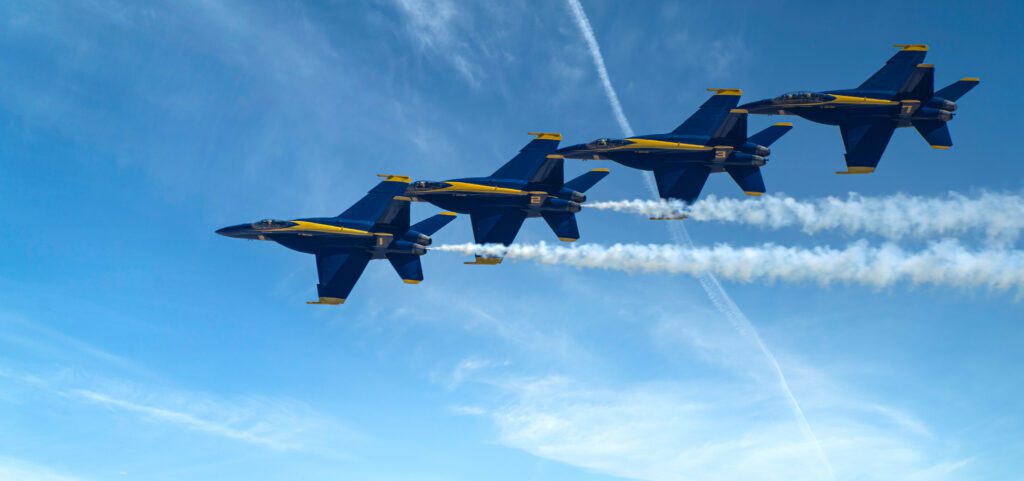

Interviewing Lieutenant Commander Wes Perkins, was probably the best part of my entire experience at the MCAS Miramar Air Show, billed as “America’s Air Show”. He’s been flying for 11 years and has been with the Blue Angels for about a year. He has one more year with the Blue Angels before returning to the fleet. During his flights, PR2 Jose Figueroa takes care of the life support portion of the Commander’s aircraft, however, he is a part of a twelve-person crew that does their best to make sure everything is properly taken care of during the show. He has a tough job, but still maintains an outstanding attitude, all while being incredibly nice.
Before joining the Blue Angels, Commander Perkins flew the Super Hornet in Lemoore, California. He’s been flying it for about eight years and loves its reliability, fuel capacity, size, and loudness. It’s a familiar airframe and he enjoys showing off its capabilities as part of the team.

When asked about the differences between the old school Hornet and the Super Hornet, Commander Perkins, being a “Super Hornet baby,” says the Super Hornet’s capabilities are totally different, allowing the team to do even more amazing and complicated maneuvers. He notes that the Super Hornet has different fuel requirements and is larger, more powerful, and much louder, making for an even more intense show experience.
On the first day of the show, it was cloudy with fairly low visibility, but the Commander was confident the weather would clear up, and when it did, they completely gave the crowd one of the best “high” shows I’ve ever witnessed.

When asked about what his favorite show was, he said the Chicago show was a blast because of its unique and challenging location. Despite the conditions caused by the wind coursing through the high buildings and over the water, it was one of the most exciting and interesting shows.
Looking ahead, the Commander is excited about the upcoming San Francisco show during Fleet Week, especially because it’s a new location for him, and his wife lived in San Francisco for 13 years before they met.
As the “free jet” in jet number three, Commander Perkins’ main job is to fly the left wing of the diamond formation, balancing the formation set by the number two jet. He talks about the precision required to create the illusion of a perfect diamond from the crowd’s perspective.

One of Commander Perkins’ favorite maneuvers is the Diamond 360, which he describes as a challenging and intense maneuver lasting about 15 seconds, but feels like an eternity. The entire show consists of 20 maneuvers and lasts approximately 45 minutes.
The pilots go through extensive training to stay sharp and avoid getting bored or complacent, which can be very dangerous. Winter training starts in Pensacola, Florida, in November and continues in El Centro, California, in January, with around 15 flights per week, six days a week.
Commander Perkins talks about the rigorous selection process for the Blue Angels and that most pilots don’t make the cut on the first try. But with dedication and determination, everyone on the team is there because they’re the best. They will all be returning to their previous roles after completing their tour, though he will take on a position as a Department Head after his time with the Blue Angels. However, his next F-18 flying location has yet to be determined.
He has been promoted to Lieutenant Commander and will take on a position as a Department Head After his time with the Blue Angels. However, his next F-18 flying location has not yet been determined.
It was a pleasure spending time with and speaking to Commander Perkins and PR2 Figueroa. Getting a little of the behind-the-scenes information was extremely informative, interesting, and enjoyable. He’s very passionate about his work and loves being a part of the Blue Angels.
Until next time . . .
